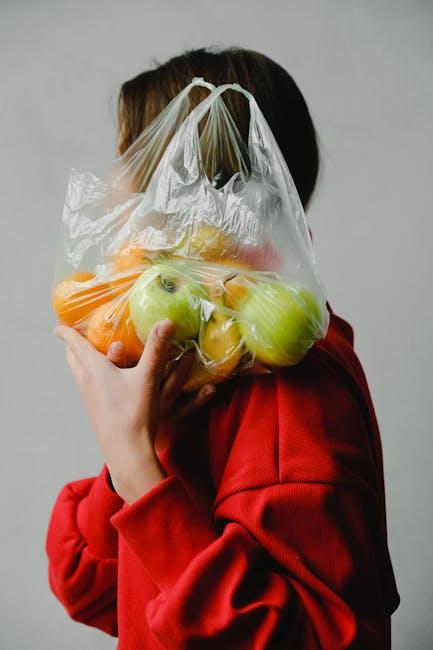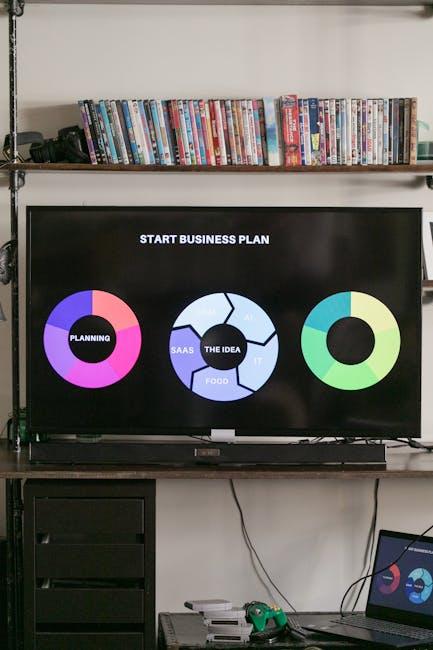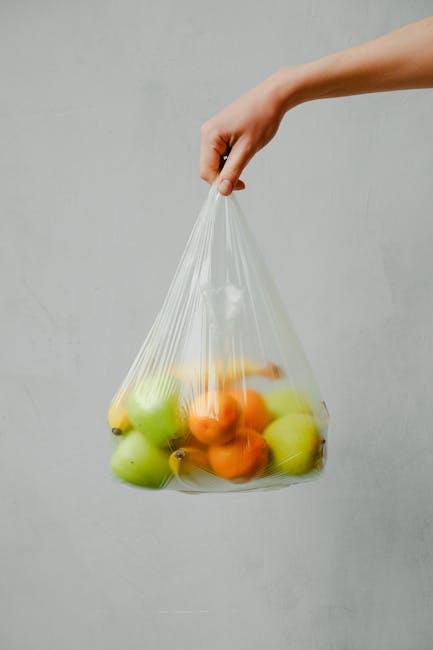In a world where nearly one-third of all food produced never reaches the dinner table, the quest to combat food waste has never been more urgent. Enter artificial intelligence-a silent partner weaving its way into our daily lives with the promise of smarter, more efficient solutions. Through innovative apps powered by AI, the age-old problem of surplus food is being tackled with data-driven precision and real-time responsiveness. This convergence of technology and sustainability is not just reshaping how we consume; it’s redefining the future of food itself, one byte at a time.
Understanding How AI-Powered Apps Transform Food Waste Management

AI-powered applications are revolutionizing how food waste is minimized across households, restaurants, and supply chains by leveraging sophisticated data analysis and predictive algorithms. These apps integrate real-time inventory tracking, expiration date monitoring, and personalized shopping suggestions to help users make smarter food choices. Through machine learning, they can forecast consumption patterns and optimize portion sizes, significantly reducing the amount of food that ends up discarded. Additionally, AI-driven image recognition allows users to scan leftovers or groceries, identifying items before spoilage, and suggesting creative recipes to repurpose ingredients.
Beyond individual convenience, AI apps foster community and sustainability by connecting users with surplus food redistribution networks. Features often include:
- Automated alerts when perishable items near expiration
- Smart meal planning based on what’s already in the pantry
- Waste analytics dashboards to track reduction progress over time
- Seamless donation coordination linking excess food to local charities
These tools turn actionable data into everyday solutions, making food waste management accessible and impactful for diverse users.
| Feature | Benefit | Example Use Case |
|---|---|---|
| Expiration Tracking | Reduces spoilage by timely usage | User receives alerts to consume milk within 2 days |
| Recipe Suggestions | Utilizes leftover ingredients creatively | Suggests soup using leftover vegetables |
| Waste Analytics | Monitors food wastage trends | Displays monthly food waste reduction stats |
| Donation Coordination | Connects surplus with needy communities | Schedules pickup for excess bakery goods |
Leveraging Real-Time Data for Smarter Shopping and Consumption

In today’s fast-paced world, data flowing in real time empowers shoppers to make informed decisions that minimize waste and maximize value. Apps harnessing this dynamic information provide up-to-the-minute updates on product availability, discounts on nearing-expiry items, and even consumption trends within communities. By integrating these insights, consumers can tailor their shopping lists to what truly matters, avoiding impulse buys and redundant purchases. This intelligent alignment between need and supply encourages sustainable habits and ensures that food moves swiftly from shelf to table without unnecessary spoilage.
Moreover, real-time data fuels personalized recommendations that adapt as preferences and circumstances shift. Consider how these apps utilize data streams to:
- Notify users when seasonal produce hits peak freshness
- Suggest recipes based on the items currently in one’s pantry
- Alert households about local food-sharing programs to redistribute surplus
- Track consumption patterns, optimizing portions for household size
Here’s a glimpse at how the accuracy of these updates can impact food waste reduction:
| Feature | Impact on Waste | User Benefit |
|---|---|---|
| Expiry Date Alerts | Cut spoilage by up to 25% | Enhanced meal planning |
| Dynamic Shopping Lists | Minimizes unnecessary purchases | Save money and storage space |
| Community Redistribution | Reduces landfill contributions | Supports local charity efforts |
Personalized Recommendations to Minimize Household Food Waste

Harnessing AI technology, many apps now tailor suggestions based on individual household habits, transforming the way we approach food consumption. These smart systems analyze your purchase history, consumption patterns, and even the nutritional preferences of your family members to offer customized meal plans and shopping lists. By predicting the optimal quantities needed and suggesting recipes that use up near-expiry ingredients, these tools empower users to make informed decisions, keeping waste to a minimum. The convenience of receiving timely reminders about leftovers or expiring items ensures that perishables are consumed well before their shelf life ends.
Here are some of the key advantages personalized AI recommendations provide:
- Efficiency: Streamlines grocery shopping and meal prep to avoid surplus.
- Sustainability: Reduces unnecessary waste, lowering overall carbon footprint.
- Cost-saving: Cuts expenses by minimizing discarded food.
| Feature | Benefit |
|---|---|
| Expiry Alerts | Prevents forgetting about food before it spoils |
| Portion Guidance | Suggests meal sizes based on household consumption |
| Recipe Integration | Transforms leftover ingredients into new dishes |
Best Practices for Integrating AI Solutions into Everyday Food Habits

When adopting AI-powered food apps to minimize waste, it’s essential to embrace a few strategic habits that can maximize benefits. Consistency is key – regularly updating your pantry inventory through smart scans or voice commands ensures the AI’s predictions remain accurate and tailored. Integrate the app into your routine by setting reminders for expiration dates and meal planning suggestions. Don’t hesitate to explore the app’s suggestions actively, especially personalized recipes that utilize leftover ingredients, which can transform potential waste into delightful dishes. Encouraging household members to engage with the app creates a community-driven approach, fostering accountability and shared responsibility in smart food consumption.
Balancing technology with mindfulness leads to more sustainable food habits. Here are some quick best practices to keep in mind:
- Review AI suggestions thoughtfully: Adapt recommendations to your tastes and needs rather than following them blindly.
- Utilize waste tracking features: Understanding what gets discarded helps improve future shopping patterns.
- Combine AI data with seasonal shopping: Prioritize in-season products that the app highlights for fresher, longer-lasting meals.
- Keep manual overrides: Allow yourself to adjust or ignore certain inputs, preserving flexibility in your decisions.
| Practice | Benefit |
|---|---|
| Inventory Updates | Accurate waste predictions |
| Family Engagement | Shared food stewardship |
| Recipe Personalization | Delicious use of leftovers |
| Waste Tracking | Improved shopping habits |
To Wrap It Up
As the plates of the future fill with innovation, AI-powered apps stand poised to transform what was once mere scraps into meaningful solutions. By bridging technology and sustainability, these intelligent tools are not just cutting down food waste-they’re reshaping our relationship with nourishment itself. While challenges remain, the fusion of data, intuition, and everyday action offers a hopeful recipe for a world where less food goes to waste and more goes to good use. In this evolving story, AI is not just an assistant in reducing waste-it is a catalyst for change, one byte at a time.










